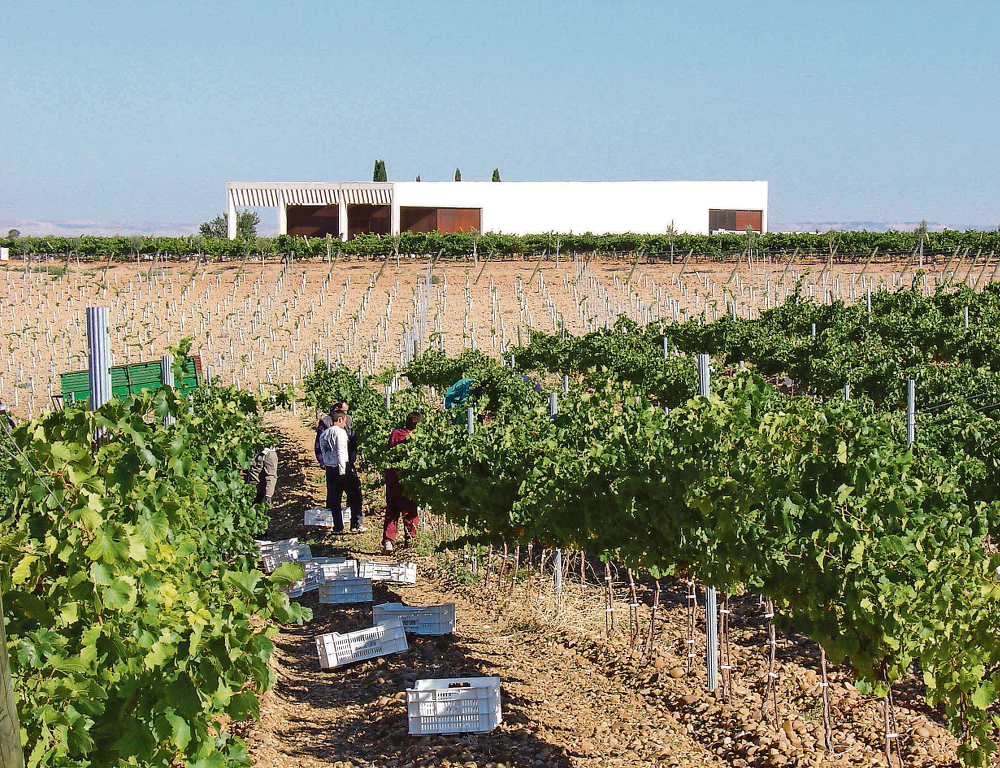My girlfriend can’t say water in Spanish. Well, she can say agua, obviously, but no waiter ever understands her. Though I try hard not to snigger, I do. It’s really not very kind.
But in northwest Spain it turns out I can’t say wine. Specifically, I can’t say verdejo, the white grape variety that I love and that I’m here to find out more about. Is that sniggering I can hear?
I learned Spanish when I lived in Cuba, mangled it on holidays in Andalucía, then confused myself further by moving to Catalan-speaking Barcelona. Now I was heading to Valladolid, 200km north of Madrid, the biggest city in the region of Castilla y León and reckoned to be where the purest form of Spanish is spoken.
I walked into a bar and asked for a verdejo. The barman looked blank and I tried again. This time he actually winced. In desperation I tried what sounded to me like a comedy caricature of Spanish, rasping out the “j” sound like a heavy smoker clearing their throat. That did the trick.
This wine area is on a 700m-high plateau, where the cold nights mean there is an acidity in the grapes. And nights are the time for harvesting.
Verdejo comes from the area around the small town of Rueda, south of Valladolid, and just 10 years ago was barely known outside this part of Spain. Now it’s hugely popular across the country. Verdejo is light but full-bodied and aromatic and a glass or bottle goes down dangerously quickly.
I often compare it with a New Zealand sauvignon blanc, although it’s not as gooseberry-fruity. A bottle starts at about €3 in Spain (€8 gets you something really good) and well under £10 in Britain.
The grape potential
The towns, villages and bodegas of the Rueda area lie on a plateau about 700m above sea level, so although summers are dry and hot, temperatures fall steeply at night.
Traditionally every house had a cellar, a bodega, carved out of the gravelly soil below grandma’s bed, where wine was made and stored. Few of these are used today, but new commercial bodegas above ground are multiplying rapidly and wine tourism is booming. Most of the wineries welcome visitors (make a reservation) and there’s a Ruta del Vino de Rueda with downloadable maps and listings.

On a hill above Rueda town, the futuristic glass-and-concrete winery of Finca Montepedroso is a great example of this new breed. Its floor-to-ceiling windows have spectacular views over the vineyard and beyond, and the fact that this winery’s oenologist has studied in South Africa and New Zealand shows how ambitious some verdejo winemakers are to realise the grape’s potential.
French-owned Belondradre y Lurton is very distinctive. Again, the architecture is spectacular – its new building curves to take in the panorama. But its way of making wine makes it stand out from the crowd: it leaves the wine to ferment in oak barrels for months, rather than using steel tanks and bottling it young. That helps explain the hefty price tag of €26.
Winemaker Marta Baquerizo Mesonero-Romanos patiently explained the complexities of its wine to a man with a €6 palate. Her taste in food was a little more affordable. She sent me off for a great dish of chickpeas and octopus at La Atrevida, a tiny bar in the nearby village of La Seca.
A lovely city to explore
This land was fought over for centuries by the kings of Castile and Aragon and the countryside is scattered with medieval castles. Castillo de La Mota in Medina del Campo is fascinating, particularly the imposing tower from which Cesare Borgia escaped in 1506, by presumably suitably Machiavellian means. And closer to Valladolid is Castillo de Fuensaldaña, which looks like it might have been designed and built by Lego.
Over a few days I visited half a dozen bodegas, from the very traditional Bodegas de Alberto – on a site where wine was produced by 17th-century Dominican monks and there’s a kilometre-long series of cellars to explore – to the very modern José Pariente run by a mother-and-daughter team, who store the wines in giant concrete eggs.
Once the capital of Spain, Valladolid proved a surprisingly charming base. The tapas were fantastic, particularly at Los Zagales and El Corcho. But the city’s culinary claim to fame is lechazo, suckling lamb. My €19 serving at Mesón Arandino was just as tender and tasty as its more famous piggy cousin.
It’s a lovely city to explore. Miguel de Cervantes lived here for a few years, and his house on Calle del Rastro is open to the public (€3, free Saturday afternoon and Sunday). Christopher Columbus died in Valladolid, and Casa Museo de Colón, on Calle Colón, can also be visited (€2).
I never learned to pronounce verdejo to the satisfaction of the barmen of Castilla y León – but thankfully their compañeros back in Barcelona are used to interpreting tourists’ mangled efforts in Spanish. Verdejo, you misheard it here first … –© Guardian News & Media Ltd, 2015